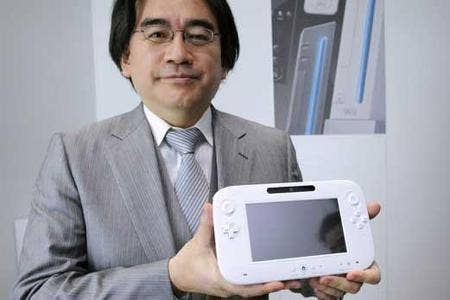Iwata: Wii U graphics can compete with next gen consoles
Nintendo president claims "fewer differentiators" in graphics performance for third-party software
Nintendo's Satoru Iwata has reassured the company's shareholders that the Wii U will not be left behind by Sony and Microsoft's next generation of consoles.
During Nintendo's general meeting of shareholders, one of the attendees raised a concern about the Wii U eventually being neglected by third-party companies in favour of Xbox and PlayStation - a significant problem for the Wii later in its life-cycle.
However, while Iwata accepted that there would be some gulf in graphics performance, he suggested that advances in this area were becoming less significant in terms of software.
"We cannot promise that the Wii U will never be excluded from multi-platform software for eternity, but we can at least assure you that the Wii U will not have such a big difference as the Wii had in comparison to how, on other platforms, developers could expect very different graphic capabilities of generating HD-applicable high-resolution graphics," Iwata responded.
"The difference between the Wii U and the other consoles will not be so drastic because there will be fewer and fewer differentiators in graphics"
"Other companies might launch a next-generation console with more power, but...the difference between the Wii U and such console will be as drastic as what you felt it was between the Wii and the other consoles because there will be fewer and fewer differentiators in graphics.
"Naturally some consumers are very sensitive about such a small difference in graphics so that we will make efforts to make the most of the performance of the Wii U to keep up with technological innovations and not to make the system out-of-date soon."
The meeting was predictably dominated by questions regarding Nintendo's stock price and profitability, and Iwata repeatedly asked for patience from the attendees. In Nintendo's view, the company's market value will improve as hardware sales increase, and that is more likely to happen after the release of the Wii U.
Iwata noted that the 3DS has achieved consistent sales performance in Japan - amounting to 55 per cent of all hardware sales - where handheld devices are regarded as the most important hardware for gaming. However, he admitted that the 3DS was still performing below expectations in Europe and the US.
"The momentum in the U.S. and Europe is currently weak," Iwata said. "Considering that the U.S. and European markets are larger than the Japanese market in terms of the size of the population, sales in the U.S. and Europe are supposed to be larger.
"At the year end of 2011 the sales momentum in those markets increased in the same way as in Japan; however, the sales pace went down after the beginning of 2012. As a result, the sales proportion of the Nintendo 3DS is now about 20% of the total video game sales in those markets. Thus, solid sales momentum has not been created."
However, Iwata also showed survey data - gathered earlier this year - to suggest that the console is held in similar esteem by gamers in Europe and the US as the handheld is in Japan. In addition, in the US the majority of survey participants still regarded the Wii as the most attractive gaming platform.
"The reason why the Wii's proportion is so high despite its sales situation not being so strong is, memories of playing with the Wii make such a strong impression on people that they remain in their minds, so the Wii is chosen as the most attractive game system even now. Conversely, for us to launch the Wii U, this is a very valuable asset and is considered favourable data."

